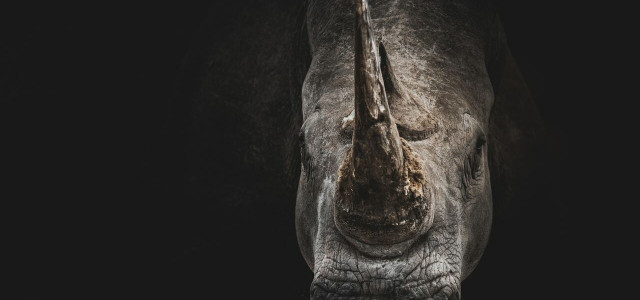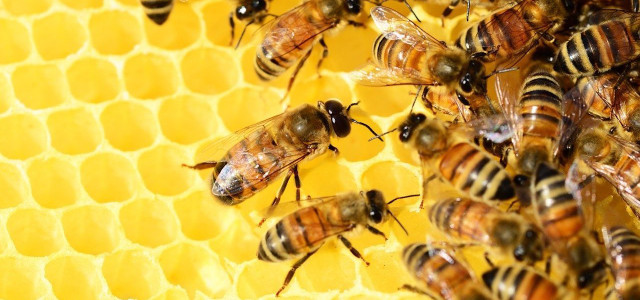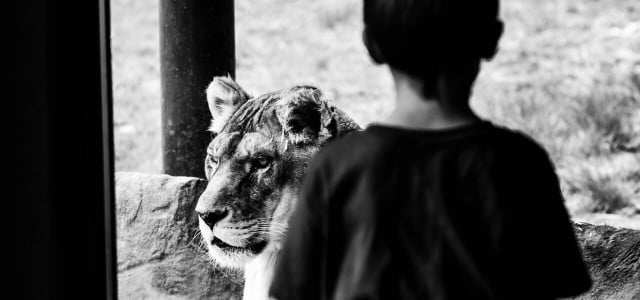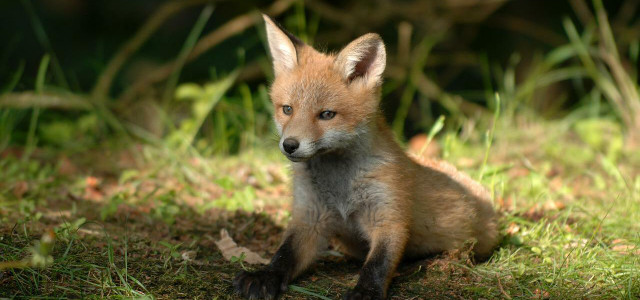Humanity has irreversibly harmed Earth's biodiversity, woven over millions of years. Read our list of extinct animals to understand why conservation efforts matter now.
The extinction of animals may seem like a slow threat that will emerge as the effects of climate change become more prominent. But did you know scientists estimate that one million species of plants and animals are being driven towards extinction — and that we humans have wiped out 60 percent of animal populations since 1970?
Unlike past extinction events that were triggered by natural phenomena, the current sixth mass extinction is a direct result of human activity. The unsustainable use of natural resources coupled with climate change is driving this catastrophic phenomenon. Habitat destruction and fragmentation are the leading causes of animal extinction, with over 80 percent of threatened species affected by this factor mostly due to food agriculture, with estimates of around 90 percent of deforestation being driven by agriculture.
Because of Humanity — Not Only Animals Go Extinct
Climate change, pollution, overexploitation, and invasive species are also significant threats to biodiversity, endangering the survival of various species by altering their habitats. The alarming reality is that how and where we produce our food is one of the primary reasons behind the human-induced threat to species extinction and ecosystems.
The loss of biodiversity can have far-reaching consequences, affecting ecosystem function, ecosystem services, and human well-being. This includes impacts on food security, water quality, disease transmission, and climate regulation.
The alarming rate of extinction caused by human activity highlights the urgent need for action to protect and conserve biodiversity. This requires a concerted effort from governments, businesses, and individuals to reduce our impact on the environment, promote sustainable practices, and protect the natural world for future generations.
To better understand why conservation efforts of endangered species and biodiversity, in general, are so vital, here’s our list of just a few already extinct animals forever gone from earth, all caused by human activity.
1. California Grizzly Bear



(Foto: CC0 / Pixabay / brigachtal)
The California grizzly bear (Ursus arctos californicus) is first on our list of already extinct animals. This burly bear was a subspecies of the North American brown bear commonly known as the grizzly bear. The Grizzly gets its name from its characteristic “grizzled” appearance, due to the white-tipped guard hairs and darker underfur of its coat. The term “grizzly” was first used to describe the North American brown bear in the early 19th century, and it has been widely used ever since. These days, “grizzly” is often used in reference to the grizzly bear subspecies found in Alaska and western Canada, which is larger and has a more pronounced shoulder hump than other brown bear subspecies, especially now that the California grizzly subspecies have been extinct for around a century.
Like other grizzlies in North America and the Kodiak bear of southern Alaska, the California grizzly was admired for its enormous size, beauty, and impressive strength. Females usually weighed about 400 pounds, whereas males could weigh over 1,000 pounds. Unfortunately, due to extensive hunting and targeting, this bear no longer roams the California wilderness. However, it is immortalized on the California state flag, a well-known symbol of the state.
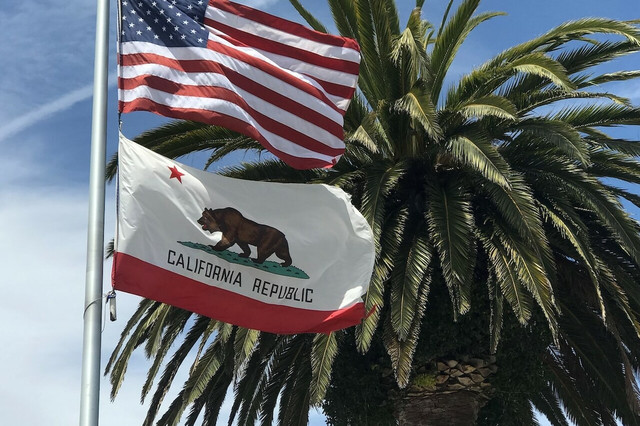


(Foto: CC0 / Unsplash / Tina Chelidze)
Though the California grizzly had the state to itself for hundreds of thousands of years, it would see this come to an end with Spanish contact. The first documented evidence of the California Grizzly was recorded by Europeans who came from New Spain or present-day Mexico. Prior to Spanish conquest, it is estimated that the California Grizzly population numbered above 10,000 in the 1700s. However, in the second half of the 18th century, when the Spanish first arrived in California and began relying on cattle herding as a primary source of income, the grizzlies became a threat.
The bears could easily access the cattle for food and simultaneously incited fear among settlers. Thus, the grizzlies became a target of the rancheros, who hunted and trapped them for entertainment purposes, pitting them against other grizzlies and even other animals such as bulls. Additionally, the bears were often poisoned and hunted. The last California grizzly bear is believed to have been shot and killed in Tulare Country, California in 1922. Less than 75 years after the discovery of gold in California, nearly every grizzly bear would be targeted and killed in the state.
Campaigns to reintroduce grizzly bears to the wilderness in California have been introduced and rejected in the past decade. However, the California grizzly has been considered as a possible candidate to undergo de-extinction efforts with the use of back-breeding, cloning, and genetic engineering to de-extinct species.
2. Cape Lion
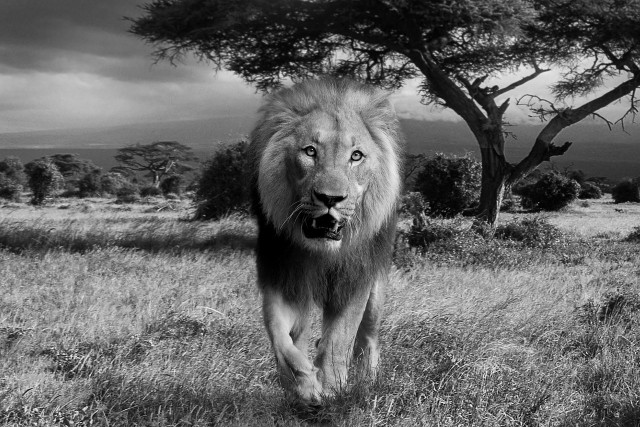


(Foto: CC0 / Pixabay / Sponchia)
The Cape lion, also known as the Cape Barbary lion (Panthera leo melanochaitus), was a subspecies of lion found in South Africa. Physically, the Cape lion was a large, muscular animal with a thick mane that extended all the way down to its belly. It had a distinct dark stripe running down its back and a short tail, which set it apart from other lion subspecies. Additionally, Cape lions were known for their aggressive temperament, and their reputation for being fierce predators made them formidable opponents to hunters and local communities alike.
Sadly, the Cape lion is now an extinct animal, having been hunted to extinction by early European settlers in the 1800s. These settlers hunted the lions for sport, but also saw them as a threat to their livestock and therefore a danger to their livelihoods. As a result, they actively hunted and killed the Cape lions, and their populations declined rapidly. By the early 1900s, the last known Cape lion had died in captivity, and the subspecies was declared extinct.
Today, efforts are being made to try and conserve the remaining lion subspecies in South Africa and other parts of the continent. The South African government has implemented various measures to protect the remaining lion populations, including stricter regulations on hunting and poaching. Additionally, conservation groups are working to raise awareness about the importance of lion conservation, and are advocating for increased conservation efforts and funding.
However, despite these efforts, de-extinction of the Cape lion is currently not possible. The subspecies has been extinct for over a century, and there are no living specimens or genetic material available for cloning or other forms of de-extinction. While some scientists have proposed using genetic material from closely related lion subspecies to try and recreate the Cape lion, this is a complex and uncertain process that would require significant research and funding.
3. Caribbean Monk Seal
The Caribbean Monk Seal (Neomonachus tropicalis), once native to the Caribbean Sea and Gulf of Mexico, was a unique species known for its distinctive physical characteristics and habitat preferences. These seals had a stocky build, with a short snout, thick fur, and unique spots on their backs. They were also known for their preference for warm, shallow waters, often found on sandy beaches or rocky shores.
Human hunting and habitat destruction ultimately led to the extinction of the Caribbean Monk Seals. They were prized by hunters for their fur, which was used to make coats, and were also hunted for meat and oil. Additionally, as human populations increased and coastal development expanded, the seals’ habitats were destroyed, making it more difficult for them to find safe places to rest and breed.
The ecological impact of the Caribbean Monk Seal’s extinction has been significant. These seals were a key predator in their ecosystem, helping to control populations of fish and other marine life. Without them, these populations have become unbalanced, leading to negative impacts on other species and the overall health of the ecosystem. Additionally, the loss of the Caribbean Monk Seal has had cultural and economic impacts on the communities that once relied on them for food and materials.
Sadly, the Caribbean Monk Seal is not alone in its fate. Many other marine species are currently threatened by human activities such as overfishing, habitat destruction, and climate change. It is essential that we learn from the mistakes of the past and take action to protect these species before it is too late. Conservation efforts, such as protected marine areas and sustainable fishing practices, can help to prevent similar extinctions in the future and preserve the health and diversity of our oceans.
4. Tasmanian Tiger
The Tasmanian tiger, also known as the thylacine (Thylacinus cynocephalus), was a carnivorous marsupial that once inhabited mainland Australia and the island of Tasmania. They had a striped coat, a long tail, and a narrow snout, similar to that of a wolf. Tasmanian tigers were nocturnal and solitary, preferring to hunt at night for small prey such as wallabies, possums, and rabbits.
Unfortunately, human hunting and habitat destruction were major contributors to the extinction of the Tasmanian tiger. The Tasmanian tiger was primarily driven to extinction by the actions of European settlers who arrived in Tasmania in the 19th century. They saw the Tasmanian tiger as a threat to their livestock and hunted and trapped them in large numbers, leading to a significant decline in the population.
In addition, the introduction of non-native species such as dogs and cats also preyed on the Tasmanian tiger, further exacerbating the decline. Habitat destruction from deforestation and agriculture also impacted their ability to survive and reproduce.
Despite being declared extinct in 1936, there have been efforts to potentially bring back the Tasmanian tiger through cloning or genetic engineering. While there have been no confirmed sightings or specimens of the Tasmanian tiger since its extinction, scientists have attempted to extract DNA from preserved specimens and have even attempted to clone the species using genetic material from museum specimens. However, these efforts have not yet been successful, and there are still ethical and practical considerations to be addressed before any attempts to revive the species can be made.
5. Carolina Parakeet
The Carolina parakeet (Conuropsis carolinensis) was a colorful species of parrot that was once widespread in the eastern United States. However, their population declined rapidly due to human activities such as hunting for feathers and habitat destruction for farming. The last confirmed sighting of the species was in 1918, and it was declared extinct in 1939.
European settlers played a significant role in the Carolina parakeet’s extinction. The settlers hunted the birds for their colorful feathers, which were used in fashion and home decor. Additionally, the settlers destroyed the parakeet’s habitat through deforestation and land conversion for agriculture. Diseases introduced by non-native species, such as domesticated animals, also contributed to the decline of the parakeet population.
The extinction of the Carolina parakeet had a significant impact on the ecosystem as they were an important seed disperser and pollinator. The loss of this species also had cultural and artistic implications, as the parakeets were a common subject in Native American folklore.
Although de-extinction of the Carolina parakeet is currently not possible, conservation efforts are being made to protect and restore other endangered bird species. The Carolina parakeet’s extinction serves as a reminder of the importance of conservation and the need to protect vulnerable species from human activities.
6. Eastern Elk
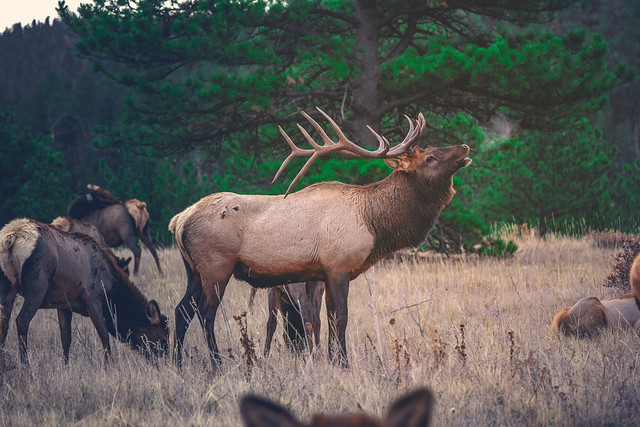


(Foto: CC0 / Pixabay / StockSnap)
One of the first extinct animals in the New World, as caused by European expansion, the Eastern elk (Cervus canadensis canadensis) was a subspecies of elk that was once found throughout the eastern United States and Canada. However, due to overhunting by European settlers for their meat, hides, and antlers, as well as habitat loss and fragmentation caused by agriculture and logging, the population of Eastern elk rapidly declined. By the late 1800s, the Eastern elk was extinct.
The ecological impact of the Eastern elk’s extinction was significant, as they played a key role in shaping the eastern North American ecosystem through their grazing and browsing behavior. The loss of the Eastern elk also had cultural and historical implications, as they were an important source of food and materials for Indigenous peoples and early European settlers.
Efforts to reintroduce elk to the eastern United States have been ongoing since the 1900s, with Rocky Mountain elk being introduced to the region. While these efforts have been successful to some extent, the restoration of the Eastern elk is not possible, as the subspecies is extinct.
7. Xerxes Blue Butterfly
Named after a Persian King for his love of nature, the Xerces Blue butterfly (Glaucopsyche xerces) was a subspecies of the silvery blue butterfly that was once found in the San Francisco Bay Area in California. However, due to habitat loss and degradation caused by urbanization and agricultural expansion, as well as the introduction of non-native plants that competed with the butterfly’s host plant, the population of Xerxes Blue rapidly declined. By the mid-20th century, the Xerces Blue was extinct.
The extinction of the Xerces Blue butterfly had ecological and cultural implications. As a native pollinator, the butterfly played an important role in maintaining the health and diversity of the Bay Area’s plant community. Additionally, the Xerces Blue held cultural significance for the Ohlone people, who considered the butterfly a symbol of rebirth and transformation.
Efforts to reintroduce close relatives of the Xerces Blue butterfly have been made, with researchers attempting to find suitable habitat and reintroduce the butterfly’s host plant. Additionally, a newly discovered Xerces-like subspecies of the silvery blue butterfly was discovered and is being analyzed as a potential solution to the revival of the Xerces blue.
8. Western Black Rhinoceros
The loss of the Western black rhinoceros (Diceros bicornis longipes) was a big hit in the fight against animal extinction, as rhinos have long been a symbol of wildlife preservation. This rhino was a subspecies of the black rhinoceros that was once found in several countries in western Africa. The western black rhinoceros had two horns and was the smallest subspecies of black rhino. They had a solitary temperament and were known to be aggressive when threatened. They were once widespread in Africa but were hunted to extinction for their horns, which were believed to have medicinal properties.
Due to habitat loss and poaching for their valuable horns, the population of the Western black rhinoceros rapidly declined. By the 1990s, the Western black rhinoceros was considered critically endangered, with only a few dozen individuals remaining in the wild. The last known sighting of the subspecies was in Cameroon in 2006, and it was declared extinct by the International Union for Conservation of Nature (IUCN) in 2011.
The extinction of the Western black rhinoceros was a critical loss, as it was an important part of the African ecosystem and played a role in seed dispersal and habitat management. It also highlights the devastating impact of poaching on wildlife populations, as well as the importance of conservation efforts to protect endangered species.
Conservation efforts for other rhinoceros species have been ongoing, including anti-poaching measures, habitat protection, and captive breeding programs. However, it is crucial to address the root causes of poaching and habitat loss in order to effectively protect endangered species like the Western black rhinoceros.
9. Oʻahu ʻakialoa (Oahu Creeper)
The Oʻahu ʻakialoa (Paroreomyza maculata), also known as the Oahu Creeper, was a bird species endemic to the Hawaiian island of Oahu. It was part of the honeycreeper family and was approximately 5 inches long.
The bird had a unique beak, which was long and curved, allowing it to extract insects from tree bark. It also had distinctive black and yellow coloring, with a greenish-gold head and upperparts. The Oʻahu ʻakialoa lived in the montane wet forests on the island, where it fed on insects, spiders, and nectar.
Unfortunately, the Oʻahu ʻakialoa became extinct in the late 1940s due to habitat loss and the introduction of non-native species, such as rats and mosquitoes, which carried diseases that the bird was not immune to. Additionally, deforestation and agricultural development also contributed to the decline of the species.
The last known sighting of the Oʻahu ʻakialoa was in 1940, and it was officially declared extinct by the International Union for Conservation of Nature in 1986. There have been no conservation efforts to bring back the species, but efforts are being made to protect other endangered Hawaiian honeycreeper species from suffering the same fate.
10. Caucasian Wisent
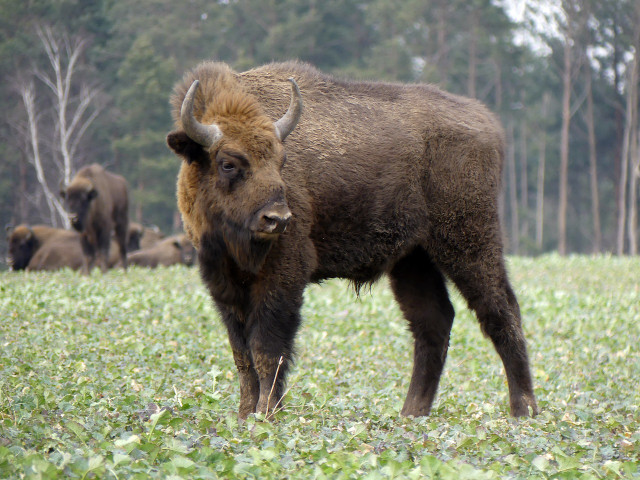


(Foto: CC0 / Pixabay / Andrzej_Kulak)
Last on our list of extinct animals is the Caucasian wisent (Bison bonasus caucasicus), also known as the Caucasian bison. It was a subspecies of the European bison that was native to the Caucasus Mountains region of Eurasia. It was one of the largest land mammals in Europe, with males reaching up to 2.5 meters in length and weighing over 1,000 kg.
The wisent had a dark brown to black coat, with a thick mane around its neck and a hump above its shoulders. Its temperament was generally docile, but males could become aggressive during the mating season.
The Caucasian wisent was hunted extensively for its meat and hide, and its habitat was destroyed by human activities such as logging and agriculture. The last wild wisent was killed in 1927, and the last captive individual died in the Sukhumi Zoo in 1957.
Conservation efforts have been made to reintroduce the European bison to the region, including a hybrid between the European bison and the American bison, called the Zubron.
Read more:
- Why the Mexican Gray Wolf is Endangered and How You Can Help
- Why You Shouldn’t Keep Exotic Pet Cats
- Woolly Mammoths vs. Elephants: Why the Difference Suddenly Matters
Do you like this post?






